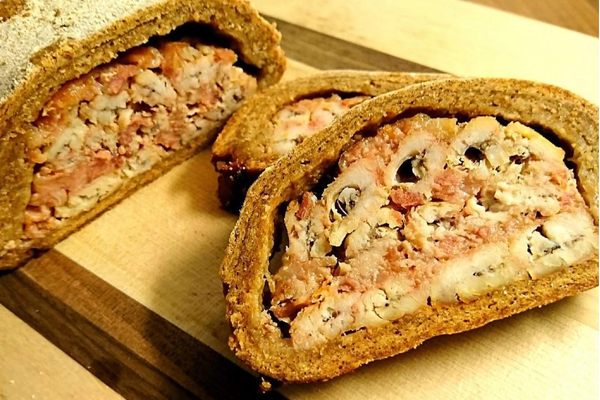More than 800 years ago, near the mountain town of Bellelay in the Jura region of Switzerland, monks at the local abbey invented what was simply known as Bellelay cheese. Local farmers also picked up their cheesemaking skills from the monks, producing the same semi-hard, raw cow’s milk wheels. After the French Revolution, monks were banished from the abbey, but dairies on the property continued to produce the cheese, which officially became known as “Monk’s Head,” or Tête de Moine.
Food lore points to two competing theories on how Monk’s Head got its name. The first explanation says that monks charged the farmers a licensing fee. Each farmer had to give the abbey one cheese per head, annually. The second suggests that a tonsure (the traditional monastic haircut featuring just a ring of hair on the outside) and this cream-colored cheese with a brown outer ring look a lot alike.
Tradition dictates that this cheese, like hair, should be shaven—never cut with a knife. Instead, a special tool called a girolle has been used since 1892. Cheesemongers serve Tête de Moine in shavings or flower-like rosettes by scraping an angled, thin, crinkled layer off the top. With more cheese surface area exposed to the air, diners experience a more aromatic, flavorful quality and melt-in-your-mouth texture. Tasters say this cheese is stronger, nuttier, and spicier than other Swiss cheeses, such as Emmental or Gruyère.
Today, local dairies near Bellelay still produce Farmhouse Tête de Moine using the same recipe as the Bellelay monks did. They make the cheese on-premises, exclusively during pasturing periods, then age the wheels for three to six months before exporting them around the world.
Where to Try It
-
Maison de la Tête de Moine
Le Domaine 1, Bellelay, 2713, SwitzerlandThis museum, dairy, cafe, and shop focuses specifically on Monk's Head cheese production.
-
Astoria Bier and Cheese-Ditmars Website
3511 Ditmars Blvd, Queens, New York, 11105, United StatesThis beer and cheese specialty shop offers an extremely wide selection of cheese, charcuterie and craft beer. They're also known for offering beer and cheese pairings.
Written By
 rachelrummel
rachelrummel
The Atlas Obscura Podcast is Back!
















